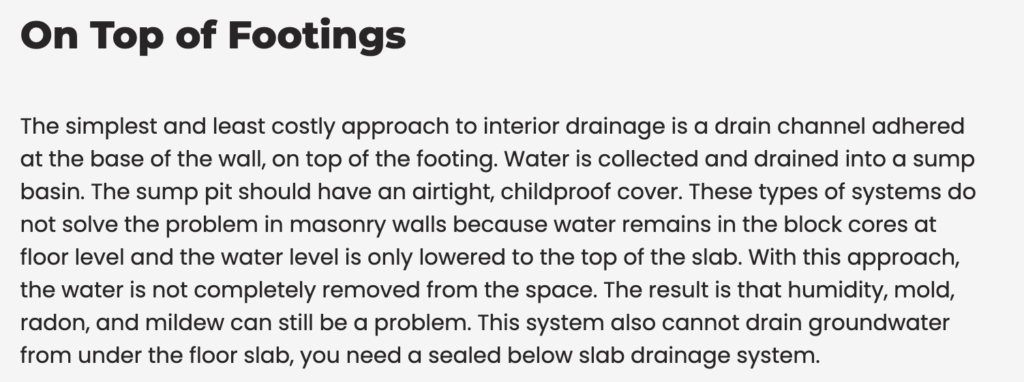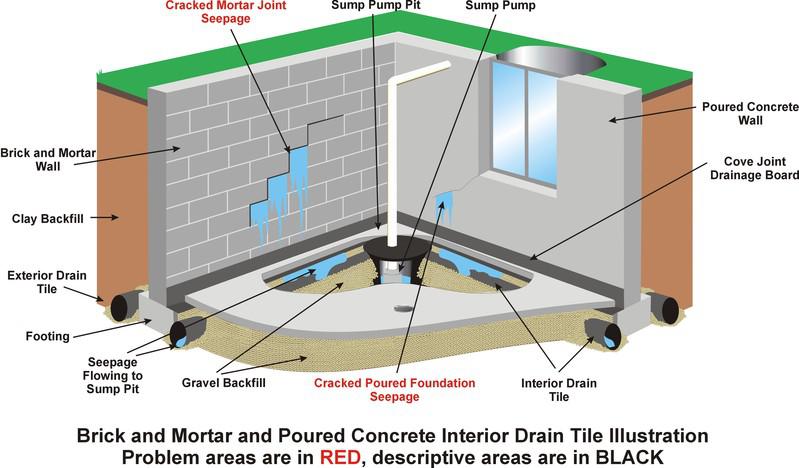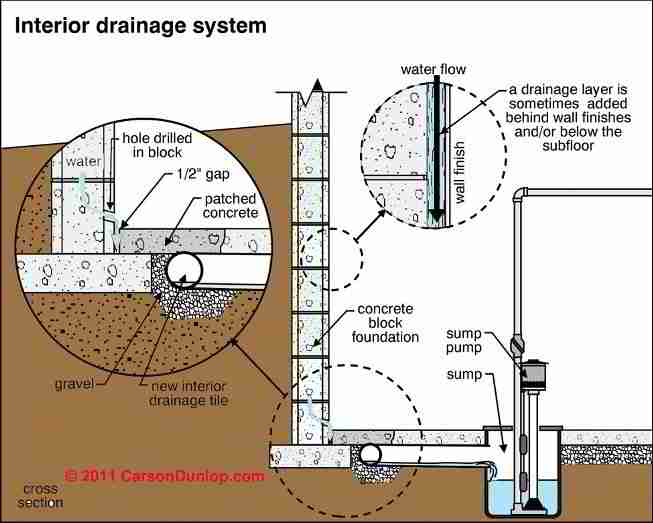Researching basement waterproofing can be an overwhelming process. There is no such thing as a one-size-fits-all approach. The right solution will depend on the source of the problem, location and type of the foundation.
If dealing with leaky basement walls or water coming up through the floor, finding an effective solution can save you time and money in the long run. There are a variety of reasons for basement water seepage, leaks, flooding, and moisture – some are easy to fix and others require help from a professional who specializes in waterproofing basements.
Sealants & Epoxy Injections
Sealants and epoxy injections are widely-considered to be band-aid fixes, when a drainage system isn’t in the budget. Sealants should not be applied over painted walls or efflorescence.
Interior Drainage
Waterproofing a basement from the inside is typically the best option – mainly because it’s more cost-effective and less disruptive than exterior excavation. An interior drainage system uses a hidden drainage channel to capture water from leaks in the walls and where the walls and floor meet; it diverts the water to a sump pump that pumps the water out of the basement.
Adding a sump pump and drainage channel inside the basement is an effective way to prevent a flooded basement and keep the basement dry.


Exterior Waterproofing
Waterproofing a foundation from the outside typically involves using polymers and membranes to coat the exterior of the walls, installing a trench drain underground, or a combination of both methods. When done properly, exterior drainage is generally considered to be the most effective way to waterproof a basement.


